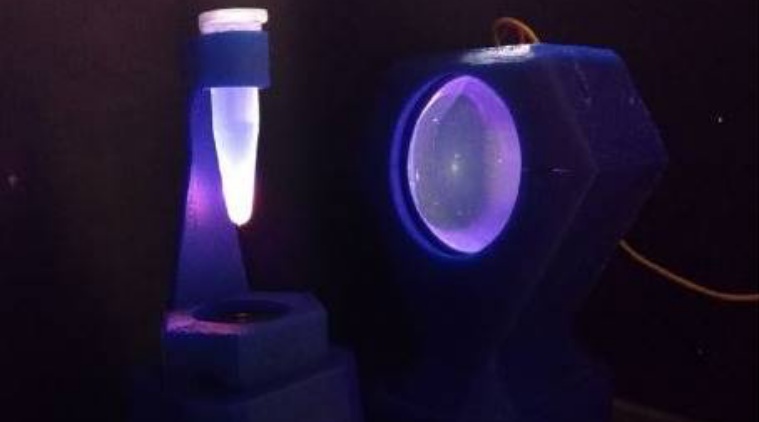 The device can also be modified to detect other substances such as lead and mercury. (Photo credit: IISc Bengaluru)
The device can also be modified to detect other substances such as lead and mercury. (Photo credit: IISc Bengaluru)
Researchers at the Indian Institute of Science (IISc) in Bengaluru have developed a low-cost, hand-held device to detect the presence of melamine in milk and dairy products. Melamine is a compound that is used to adulterate milk and dairy products, which can lead to kidney-related diseases and also kidney failure.
According to the researchers, the techniques currently used to detect the presence of melamine are time-taking and typically require expensive and sophisticated equipment and highly trained personnel.
The device developed by the team is expected to make the process of detecting melamine in water and milk faster.
According to an IISc statement released on Monday, the researchers used the new device to test a range of concentrations of melamine and were able to detect up to 0.1 parts per million (ppm) of melamine in water and milk, which is much lower than the acceptable limit of 1 ppm. “Detection took just four minutes,” the statement read.
Explaining the process, Radhika Nambannor Kunnath, a Ph.D. student in Gorthi’s lab and the lead author of the study, said, “The team, led by Sai Siva Gorthi, Associate Professor in the Department of Instrumentation and Applied Physics (IAP) at IISc, devised a fluorometer that can detect the formation of copper nanoparticles on specified double-stranded DNA (dsDNA) templates.”
“These nanoparticles are inexpensive to synthesise and possess a property called fluorescence in which a material emits light of a different wavelength (colour) when a particular wavelength of light falls on it.
“The presence of melamine in the sample disrupts the synthesis of these copper nanoparticles and causes a reduction in the intensity of fluorescence, which is detected by the proposed fluorometer.
The natural fluorescent glow of these nanoparticles is very weak and their detection requires expensive and sophisticated spectrometers.”
In a study conducted in 2019, the same team led by Gorthi had devised a way to enhance this glow so that it can be detected by off-the-shelf photodiodes. In the present work, they used electronic components that were easily available at a lower cost, such as a simple UV LED to illuminate the nanoparticles and a PIN photodiode to detect the fluorescence.
The device can also be modified to detect other substances such as lead and mercury. “This fluorometer can also be easily adapted to detect other analytes of interest (like biomolecules and proteins) using these copper nanoparticles, by changing the template sequence of the dsDNA and other reaction components,” says Kunnath.
The team believes this can be deployed as a screening tool for environmental and food quality testing.
India is the world’s largest producer and consumer of milk. It can be recalled that food regulator Food Safety and Standards Authority of India (FSSAI) had imposed a ban on all milk and milk products from China in September 2008.
In April 2019, FSSAI had recommended the extension of the ongoing ban till labs at Indian ports are equipped for melamine testing.